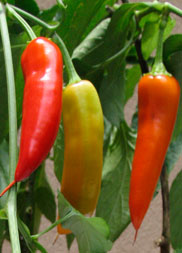About this tool
Acknowledgements

Microlepidoptera on Solanaceae was developed and published by the USDA APHIS PPQ Identification Technology Program (ITP) as part of a cooperative agreement with Florida Department of Agriculture and Consumer Services (FDACS-DPI). Section 10201 of the 2008 Farm Bill provided funding for the agreement.
The authors thank numerous individuals to give their help to finish this work. Here we listed individuals on this page to express our thanks to them.
Terrence Walters and Amanda Redford (USDA-APHIS-PPQ-ITP) provided logistical and technical support and oversaw key development.
Akito Kawahara and Lei Xiao (UF) directed and performed the extraction of diagnostic and phylogenetically informative genes from available specimens. For sequencing services, we thank the University of Florida's Interdisciplinary Center for Biotechnology Research (ICBR) and the Canadian Centre for DNA Barcoding (CCDB) of the Biodiversity Institute of Ontario.
In addition to the authors’ home institutions, specimens used in the study were used or borrowed from the U.S. National Museum of Natural History (John Brown, M. Alma Solis), Mississippi Entomological Museum (Richard Brown), Netherlands Centre for Biodiversity Naturalis (Sjaak Koster), the New Zealand Arthropod Collection (Robert Hoare).
We appreciate the use of the Charles A. Triplehorn Insect Collection (The Ohio State University).
The Mississippi Entomological Museum (MEM) and Vernon Brou (Abita Springs, LA) kindly provided additional distribution data.
USDA National Agricultural Library and Libraries of the University of Florida for obtaining copies of obscure references.
Stephanie Stocks (University of Florida) for information about Duponchelia fovealis.
Hugh Smith (UF Gulf Coast Research and Education Center) for vegetables and plant samples that yielded field damage.
Ken Hibbard (Fort Pierce) for raising specimens on Tropical soda apple.
Lane Southerland, Andrew Derksen, and José Rincon (FDACS-DPI CAPS Program) for assistance with fieldwork in Florida, and Douglas Restom-Gaskill (USDA-APHIS-PPQ) for organization.
We thank several people for contributing photographs: Lyle Buss, Ana Diaz Montillo, Frans Griepink, Marja van der Straten, Roy Goff, Nicholas Martin and Plant and Food Research (New Zealand), and the Ministry for Primary Industries of Plant Health and Environment Laboratory (New Zealand).
John Heppner (McGuire Center for Lepidoptera and Biodiversity, Gainesville, FL) for acquisition of specimens, and Deborah Matthews-Lott and the late Dale Habeck (UF) for unpublished rearing information.
Terhune S. Dickel (Anthony, FL) for loan of specimens.
Clorinda Vergara Cobian (Universidad Nacional Agraria La Molina) for information about L. venezuelensis.
We thank Diego Rincon Rueda (The Ohio State University), Diana Rueda Ramírez (Pontificia Universidad Javeriana) and Elisa Jimeno Calle (Universidad El Bosque) for obtaining Tecia solanivora specimens from Colombia.
Julieta Brambila and Amy Roda (USDA-APHIS-PPQ) obtained T. absoluta larvae from Spain and Panama.
Susan Ellis (USDA-APHIS-PPQ) helped process the cuticle images of Tuta and Keiferia.
Jim Slavicek (USDA-FS) provided lab space at the Northern Forest Research Station.
Joe Cavey and Joel Floyd (USDA-APHIS-PPQ) supported the project.
Wayne Dixon, Greg Hodges and FDACS-DPI personnel for supporting and reviewing the project.
Finally, we thank Marc Epstein (California Department of Food and Agriculture), Terry Harrison (University of Illinois at Urbana-Champaign), and Eric LaGasa (Washington State Department of Agriculture) for providing critical, constructive reviews of a beta version of the tool.

